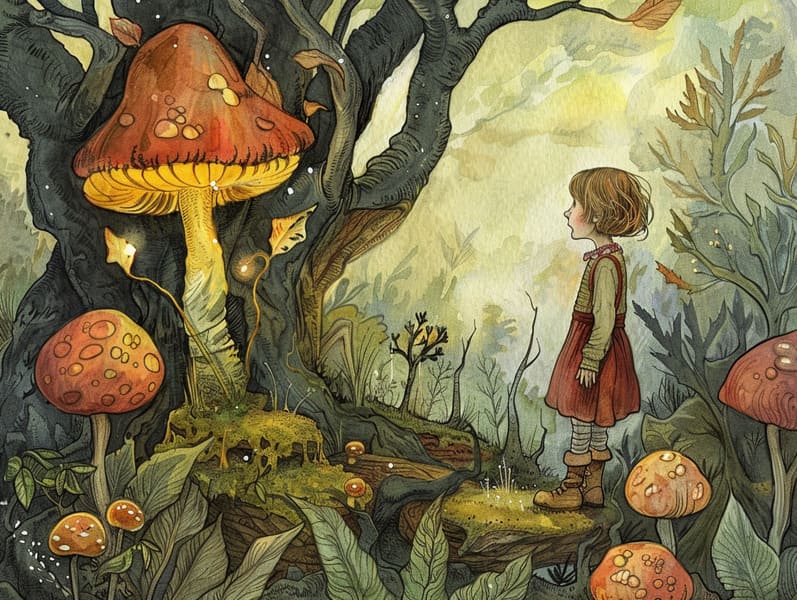The Evolution of Fairy Tales and Their Unceasing Delight.
The Evolution of Fairy Tales and Their Unceasing Delight.
Blog Article

Popular fairy tales have legendary status. These narratives have been narrated from one generation to the next millennia before they were ever written down. They came from a variety of civilizations, including Western traditions. They were initially passed along among grown-ups, often carrying themes and messages aligned with the societal norms and beliefs of the time.
The Grimm brothers, the two Grimm brothers, were among the first to collect and release many of these beloved tales. Their volume, "Grimm's Fairy Tales," included stories like "The Little Glass Slipper," "Hansel and Grethel," and "Snow-White and Rose-Red," which have since become essentials in the world of timeless fairy tales. Similarly, Hans Christian Andersen's magical stories, such as "The Sea Maid," and "The Story of the Ugly Duckling," have won hearts worldwide, solidifying their place in the pantheon of famous fairy tales.
Despite their age, traditional fairy tales remain as significant as ever, especially as kids' bedtime tales. These whimsical stories are now available in various formats, including vibrantly illustrated books, delightful animations, and online storybooks.
Their unwavering allure can be connected to several enchanting factors:
Moral Lessons: Old fairy tales often share important moral lessons. Tales like "The Boy Who Cried Wolf" teach the merit of honesty, while "The Hare and the Tortoise" stress the benefits of resolve and humility. These tales offer the young clear distinctions between virtue and vice, helping to shape their moral compass in a subtle yet significant way.
Compassion and Insight: Old fairy tales frequently include heroes facing tests and troubles, stimulating young readers to identify with their struggles and celebrate their triumphs. For instance, "Beauty and Her Beast" teaches us the merit of appreciating inner worth to comprehend the inner being of a individual, advancing tenderness and appreciation.
Cultural Insights: Many timeless fairy tales are deeply embedded in the cultural contexts from which they developed. Learning from these narratives can provide illuminating insights into different beliefs, strengthening a sense of cultural insight and respect.
Inventiveness and Imagination: The fantasy-filled elements in fairy tales—fairy godmothers—encourage children’s creativity. These fairy tales transport readers to mythical realms, invigorating inventive ideas and a sense of amazement that continues a lifetime.
Timeless fairy tales are not only bewitching but also enlightening. They provide fascinating tools in building various mind and heart abilities in children. When old fairy tales are voiced, they advance verbal skills by offering new lexicon and elaborate sentence structures. This practice also strengthens listening skills and concentration, as little ones hang on every word, anxious to see what happens next.
Furthermore, discussing the themes and characters of fairy tales can sharpen logical thinking and evaluative skills. Young readers are led to spot patterns, make predictions, and realize cause and effect. These discussions also help the young articulate their thoughts and feelings, fostering their emotional intelligence.
In today’s modern era, the existence of free fairy tales online has made these fairy tales more obtainable than ever. Internet sites and web apps give large libraries of popular fairy tales that can be accessed or heard anytime, anywhere. Fairy tales spoken are particularly well-received, providing an enjoyable way for the young to relish these alluring stories. Audiobooks and click here spoken videos carry characters and settings to life, often complemented by charming musical scores and tunes that amplify the tale-telling adventure.
The timeless fascination of old fairy tales lies in their ability to transform to current eras while sustaining their main lessons. Contemporary reinterpretations of these tales often feature more multicultural protagonists and modern settings, making them accessible to today’s audience. However, the underlying themes of spirit, kindness, and equity remain unchanged, continuing to reach audiences of all ages.
Fairy tales also offer a sense of contentment and knowability. They deliver up a well-arranged narrative with a evident beginning, middle, and end, often coming to a close with the settlement of conflicts and the triumph of good over bad. This constancy can be solacing for young ones, gifting a sense of solidity in an unstable world.
Classic fairy tales continue to mesmerize and educate new generations, maintaining their mystique and applicability in modern society. As nighttime stories for kids, they impart a perfect blend of wonder and wisdom, developing moral values, empathy, and creativity. The prevalence of online storybooks and the likability of fairy tales recited assure that these timeless tales remain reachable to new generations.
By defending and communicating these fairy tales, we continue to laud the rich tapestry of fables and cultural heritage. Whether you are discovering a vibrantly illustrated book, viewing a virtual library, or listening through an read-aloud story, the allure of famous fairy tales is always within reach. These fairy tales remind us of the lasting ability of stories and its ability to tie us across generations and cultures.
Regardless if you are discovering a vibrantly illustrated book, delving into a cyber collection, or listening on an audiobook, the allure of ancient fairy tales is always within reach.
These narratives highlight of the unceasing force of stories and its ability to bond us across centuries and lands, forging a link that captivates and teaches alike.